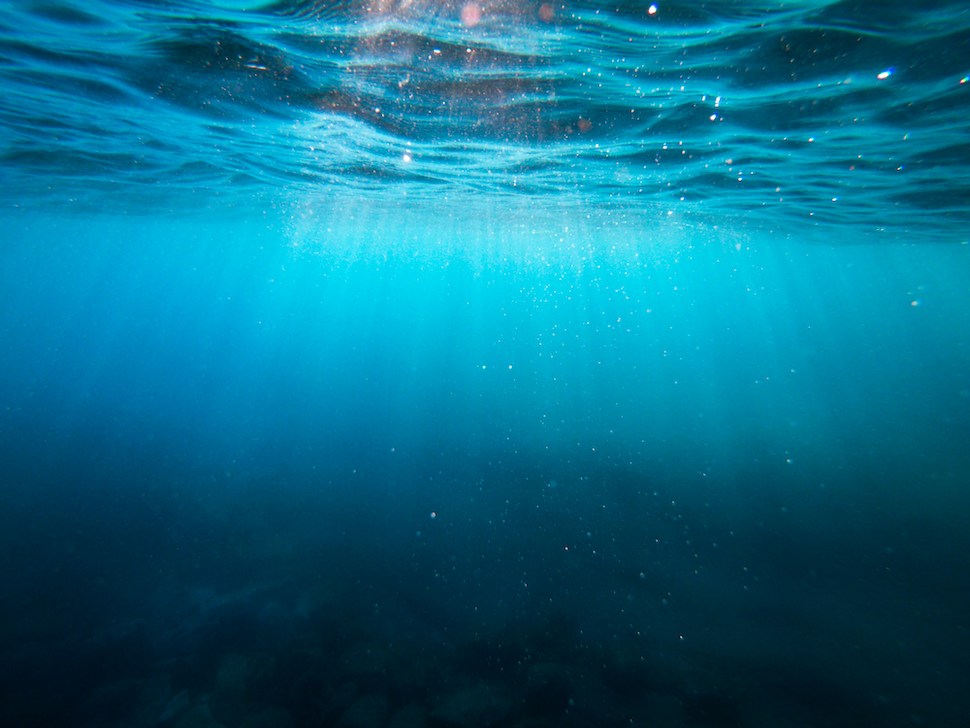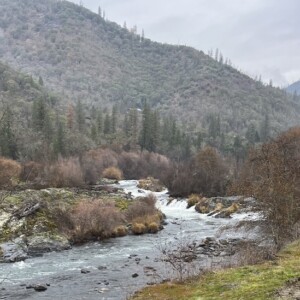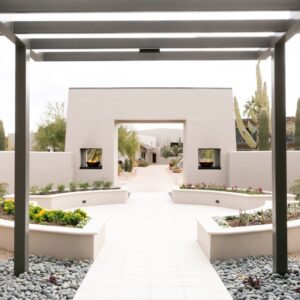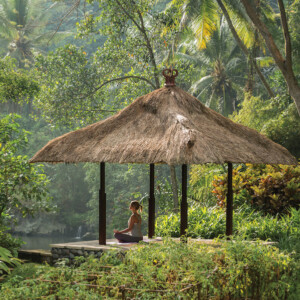
These days you can’t go to a spa without a blessing with water. You can’t go to a spa without a little prayer to yourself—an intention. You can’t go to a spa without an immersion in sound. And of course, you won’t get out of a spa without a baptism in water—hot, cold, or both. So, what’s shaping spa now is church-like. But it’s older, both more selfless and self-centered, and more inclusive and exclusive than any organized religion.
What we are becoming now is “Earth Indigenous.” A phrase coined by my husband Stephen Kiesling, retreat expert and founding editor of Spirituality & Health magazine. This is about people borrowing from everywhere and embracing the ritualization of everything. “Being Earth Indigenous is recognizing that human beings are so much older than any story we tell about ourselves,” shares Kiesling. “Culture is now a free for all and really always has been.”
None of this is new.
Stephen and I live on the banks of Ti’lomikh Falls on the Rogue River in Southern Oregon. Our property is a sacred site to the Takelma tribe who have lived here for thousands of years. Here, the men traditionally lived in sweat lodges and everyone did regular sweats and cold plunges in the river. Now our local Costco has inflatable hot tubs for $500 and inflatable ice baths for $199 (buy the ice on the way out). Meanwhile, Kohler is taking orders for its new home ice bath, developed in collaboration with Remedy Place, which will take your breath away anytime for about 15 grand.
What’s new is that ancient home practices have come back home.

Ti’Lomikh Falls on the Rogue River
Another ancient ritual of our local Takelma was the Vision Quest. Takelma means “People of the River,” and so the people of the Rogue would walk upstream to the source of their river and then climb to the rim of Mount Mazama to find a spectacular seat overlooking Crater Lake. Their goal over thousands of years was to find their calling. Today, a vision quest is a pilgrimage to a retreat, and every resort and destination spa seeks to create its own version of a seat overlooking Crater Lake—a place to find your calling.
But there’s a rub: Transformative retreats, originally vision quests, have typically been inexpensive if not free and community supported. What’s new is the growing number of luxury retreat centers, the large number of spiritual entrepreneurs who dream of making large sums of money leading luxury retreats, and the growing number of expensive retreat-leader trainings. But is the number of retreat centers and entrepreneurs outpacing the number of people willing to pay for luxury retreats? How big is this market? Is this a bubble about to burst?
One sign that the retreat market may be saturated is that competition for transformative experiences is reaching contradictory extremes. The ultimate example may be private jet world tours, which allow groups to experience a lifetime’s bucket list of authentic transformative indigenous rituals worldwide—within a couple of weeks! And yacht excursions that offer extravagant cultural immersions designed to provide guests with “unparalleled experiences that blend luxury with authentic local culture.” These tailored experiences provide intimate access to some of the world’s most beautiful and exclusive locales and boast the annual carbon footprint of a submerging island nation.
Competition for transformative experiences is reaching contradictory extremes . . .
Aerobics, yoga, breathwork, and mantra practices are also morphing—as always. The latest melding is the unveiling of the Sanctum Anthem, “a collective ritual of unity and discovery, empowering the body and expanding the mind.” The hero track is a collaboration between the movement phenomenon Sanctum and music provider Myndstream. This sacred and high-octane self-empowerment community trance dance is remarkably inspiring and is ultimately about “cathartic movement, emotional release, and the power of the mind.”
And speaking of emotional release, an entire session led by a blatantly tearful male at the October Synergy Retreat Show held at Revivo Wellness Resort Bali, consciously broke a final modern taboo and is likely opening floodgates. Look for male ritual crying in 2025.
And even more on letting it all out, I’m seeing a trend in what I call Narrative Medicine. As I first reported on for Spirituality & Health’s annual Retreat Guide, how you tell your history is how you shape your future. Memoir writing is becoming an extremely powerful tool.

Civana Spa
Civana Wellness Resort & Spa in Carefree, Arizona, offers “Write-to-Heal Retreats” that focus on therapeutic writing techniques. Can’t get to the spa? Fear not! There are a number of new AI-powered apps developed to guide users through the process of writing their autobiography—or a parent’s biography, in the case of Life Story AI. What’s coming, obviously, is an AI-powered writing retreat where people can essentially write their memoir in a week with a living coach, a daily massage, and a case of local wine.
The new rush to preserve one’s life story ties into our insatiable lust for longevity. “The longevity trend has absolutely consumed the health and wellness market,” shared Beth McGroarty, Vice President for Research & Forecasting, Global Wellness Summit, at the November Global Wellness Summit held at The Old Course Hotel, Golf Resort & Spa in St. Andrews, Scotland. “The term has been stretched so thin that now it means everything from serious evidence-based diagnostics to cryotherapy and IV drips. Everything is longevity so nothing is longevity.”
Whatever happened to be here now? It seems Ram Dass and “be here now” have been replaced by a “longevity enthusiast” named Bryan Johnson whose lifestyle mantra is “Don’t Die.” More promising is the coming launch of a new fitness brand called FitSpan that focuses on getting the best life out of as many years as you have.
Perhaps even more promising is a renewed focus on pleasure, which I touched upon in last year’s report. At our Thanksgiving table this year, there will be a traditional wine connoisseur, a fellow who grows both psilocybin and cannabis, and an MD who is a trained goddess practicing ketamine-assisted therapy. Not to mention the turkey itself, which comes fully loaded with tryptophan, a precursor to serotonin.
This is just one example of the new trend, “Dopamine Dining,” called out by Finn Partners in its new report, “The Future of Wellness Tourism 2025.”

Preidlhof offers an outstanding Wellness Healing Menu
“With the ‘joyconomy’ fully in in play, dining out will be seen as a form of therapy. Playful, community-driven dining events will proliferate as diners fully embrace meals that elevate serotonin levels and foster emotional healing. Functional ‘mood foods’ packed with adaptogens, nootropics, and dopamine-enhancing flavors will become standard fare, as eateries curate experiences that nourish both body and mind.”
And also this from Finn Partners’ new report: “Food as Self-Care.”
“Meals will do more than satisfy hunger; they will be essential to self-care. [Kind of like breathing.] Empathy and inclusivity will serve as the cornerstones of every dining experience. Solo dining, once stigmatized, will be celebrated as a vital practice, with restaurants universally offering individual-portioned menus tailored to personal wellness needs. Calming rooms and sensory-friendly hours for neurodiverse diners will become the norm, ensuring every guest feels value and at ease.”
Granted, the knowledge of the neuroscience of relaxation is useful, but beware using neuroscience jargon in spa menus. Remember that most people go to spas to leave their brains at the door.
And something else to chew on: Post-election, will the wellness pendulum swing away from trauma? In recent years, we were encouraged to acknowledge and embrace some form of traumatic experience—for better and for worse. The good news was an expansion of emotional awareness and empathy. The bad news was simply wallowing.
The hopeful trend now is resilience—and ideally without an emotional hardening.
I don’t need to say anything about napping—people remain sleep-deprived and creative naptime will continue to be big at spas. Case in point: the Sacred Nap I recently experienced at The Sacred River Spa at Sayan. Suspended from the ceiling of the bamboo Dharma Shanti Bale, I was cocooned in an aerial silk hammock and lulled into a dream-like state by the beautiful voice of Ibu Fera.

Meditation, Four Seasons Bali Sayan
And, of course, touch will continue to be big. But ritual touch, as I reported in early 2023, is increasingly being placed in new hands, and is now provided by your friendly robot. With the speed of change in AI, the magic fingers are going to become increasingly magical—and coming to your home soon. Which points to the most important thing of spa—spa survival equals better touch. The combination at Four Seasons Resort Bali at Jimbaran Bay of an osteopathic massage and a private Yin yoga session will beat the bots for at least another decade.
And finally, water blessings are becoming as ubiquitous as sound healing. In our local area, within three days, there was a water blessing by a Rinpoche, another by a New Age priestess, and still another here at Ti’lomikh Falls by a Native American woman. Do they work? During the water blessing at our place at Ti’lomikh Falls—a blessing in honor of the Osprey’s Path—not only did an osprey show up, but a golden eagle flew by.
Mary Bemis
Mary Bemis is Founder & Editorial Director of InsidersGuidetoSpas.com. An advocate for all things spa, Mary forged a vocabulary for spa reportage that is widely used by those who cover the issues today. Recently honored as a Top 30 Influential Voice Transforming Wellness by Medika Life, Mary is an inaugural honoree of Folio’s Top Women in Media Award. Her spa media roots run deep—in 1997, she launched American Spa magazine, in 2007, she co-founded Organic Spa magazine, and in between serving on the ISPA and NYSPA Board of Directors, she was on the launch teams of Luxury SpaFinder and New Beauty magazines. Named a "Wonder Woman of Wellness" by American Spa magazine, Mary was honored by the International Spa Association with the distinguished ISPA Dedicated Contributor Award. She is a special advisor to the non-profit Global Wellness Day.
- Web |
- More Posts(81)